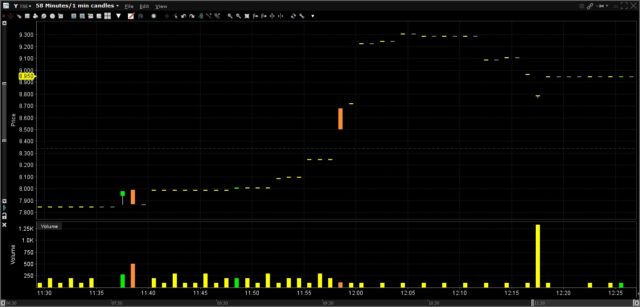The algorithms that dictate the trading in the marketplace (there are very few human beings intraday that are actually trading stock anymore) are causing very weird gyrations.
In the case of Yellow Pages (TSX: Y) (yes, if you didn’t get stopped out of this company, you will be making money after this CoronaPanic is over with), it went from $8 to $9.20 with a trigger of about a thousand shares.
This can only be described as dysfunctional algorithmic trading – some machine that was ordered to accumulate at any cost, and little in the way of supply between $8 to $9.20. After that was hit, another algorithm somewhere else was activated that employed some sort of “regression to the mean”, or perhaps Yellow then became the desired choice for a liquidation, or who knows.
But either way, you can take advantage of these dysfunctional algorithms by paying attention – selling when the buying is “stupid”, and buying when the selling is “stupid”.
With thinly traded stocks, always keep in mind that trade prices are done at the margins. Trades that are forced always create the most potential for price dislocation, especially for thinner traded securities.

You might be interested to read about opposite view on YP: http://www.mispricedmarkets.com/2020/03/14/portfolio-update-sold-yellow-pages/
And I actually agree with all those bad reviews on Google Maps they have: https://goo.gl/maps/aJTeBkEFTjCctdcm8
In 2015 I’ve started a business with some partners and we made a deal with YP, their service was overpriced comparing to regular Adwords and didn’t really bring many customers as they promised.
And unlike Adwords, you sign 1 year contract with YP, which is quite a pain. So we cancelled it as soon as possible and never contacted them again.
So, I was surprised reading in your posts that YP is doing good and decided that only I had bad experience, but looks like not.
https://divestor.com/?p=9224&cpage=1#comment-111392
Wrote my comments here.